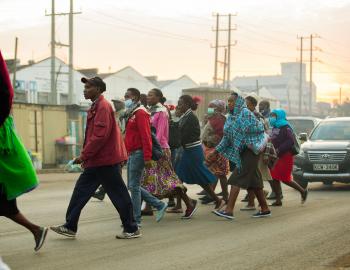INSIDE STORY: Climate change and flood risk - Challenges for Jamaican towns and communities
INSIDE STORY: Climate change and flood risk - Challenges for Jamaican towns and communities
Climate variability in the Caribbean may cause tropical storms and hurricanes to become more intense in the future, although perhaps not more frequent. Intense storms carry extreme, flood-inducing rainfall, and cause storm surges that can inundate coastal lowlands, affecting tourism, agriculture and major infrastructure. Although maps showing potential flood areas exist for the major watersheds in Jamaica, they do not take climate change into account.
To assess future flood risk properly, rainfall projections obtained from computer models of climate should be used to incorporate climate change into risk assessments. The challenge faced by disaster-management authorities, planning agencies and researchers is how best to use the results from the climate models to predict future flood risk for vulnerable communities.
These ideas led to the CDKN-supported project “Climate Change and Inland Flooding in Jamaica: Risk and Adaptation Measures for Vulnerable Communities”, which aimed to address the potential medium- and long-term impacts of climate variability and change on flood risk for selected study areas in Jamaica. This 'Inside Story on Climate Compatible Development' provides an overview of what the project achieved and what team members learned from the experience, and how these lessons could inform other developing country watersheds at risk from climate impacts.
Experience from the project shows:
- Flood hazard maps showing present and future flood risk for vulnerable communities at national and subnational levels are vital for disaster management and for planning climate compatible development in flood-prone areas.
- Local government staff including disaster coordinators at parish level and community representatives should be offered ongoing training in using geospatial data and understanding its importance in disaster management and climate studies. Improved data sharing and cooperation between academia and local and national governments will be vital.
- High-quality data on hazards and risks can inform good policies that save lives and reduce loss of livelihoods and damage to property.



